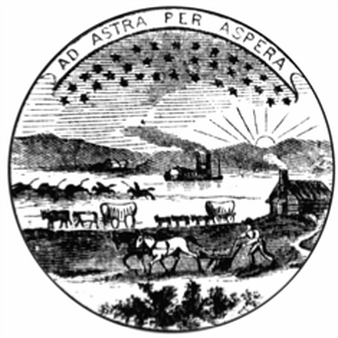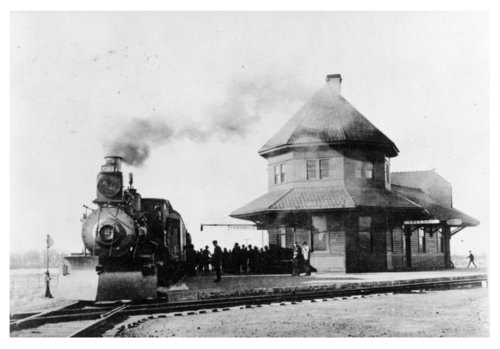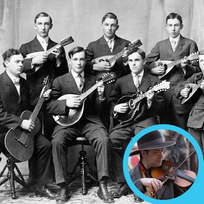Kansas Heritage Series
|
Each winter, the Wilson County Old Iron Club hosts a 3 event series focusing on a different aspect of Kansas history and heritage. The premier series was held in early 2013. All events are held on Sunday afternoons at 2pm, in the Town Hall at the “Rollin ‘Red’ Vandever Memorial Park”. |
2024 Heritage Series
This year’s series focuses on three seemingly very diverse topics, yet
all will inform us about aspects of our shared history.
all will inform us about aspects of our shared history.
|
January 21 – Railroads in Wilson County - Arrivals and Departures
In Wilson County, as throughout the growing nation, railroads were instrumental in transporting goods and supplies needed for construction, industries, and daily life, as well as moving people. The depots saw soldiers departing for war and being welcomed home again, families bidding each other farewell or welcoming loved ones home, groups of people embarking for a pleasant excursion, and all of the departures and arrivals that now might take place in an airport. Wilson County had numerous depots, and communities sprang up around them. Often, when the train no longer stopped there, the small settlement soon lost its Post Office, grocery store, and other businesses. n Wilson County, as throughout the growing nation, railroads were instrumental in transporting goods and supplies needed for construction, industries, and daily life, as well as moving people. The depots saw soldiers departing for war and being welcomed home again, families bidding each other farewell or welcoming loved ones home, groups of people embarking for a pleasant excursion, and all of the departures and arrivals that now might take place in an airport. Wilson County had numerous depots, and communities sprang up around them. Often, when the train no longer stopped there, the small settlement soon lost its Post Office, grocery store, and other businesses. Presented by Leanne Githens, Wilson County Historical Society & Museum volunteer and researcher. |
|
February 11 - Kansas Music History
What is it like to be a musician from Kansas and what can their music tell us about time and place? Using music and storytelling, this presentation explores informal music traditions, styles, and musicians from Territorial Kansas up through the age of the radio, and concludes with a demonstration of various instruments and music from early 19th and 20th century Kansas. Presented by Derrick Doty, music historian and assistant at the Riley County Historical Museum |




